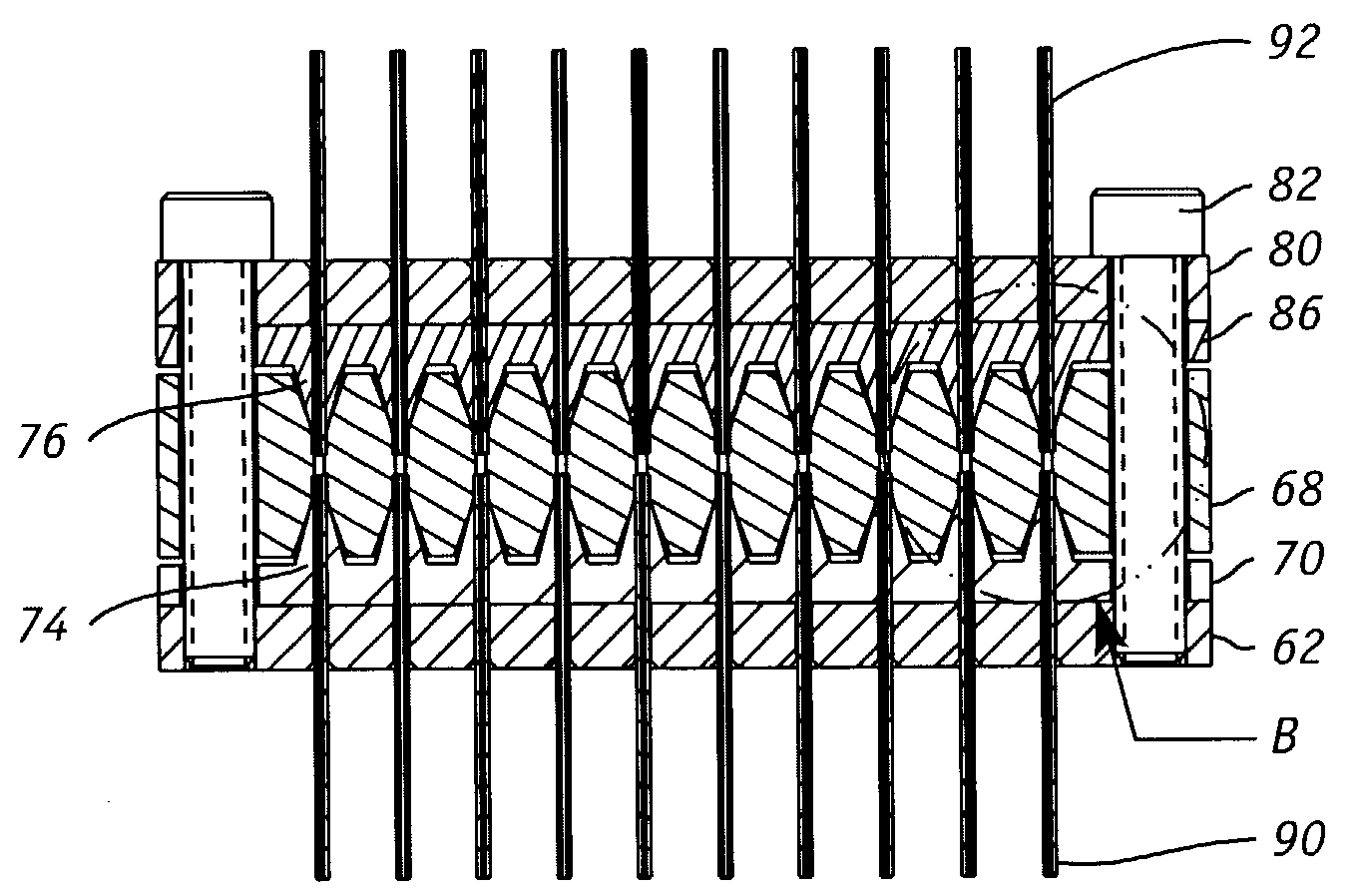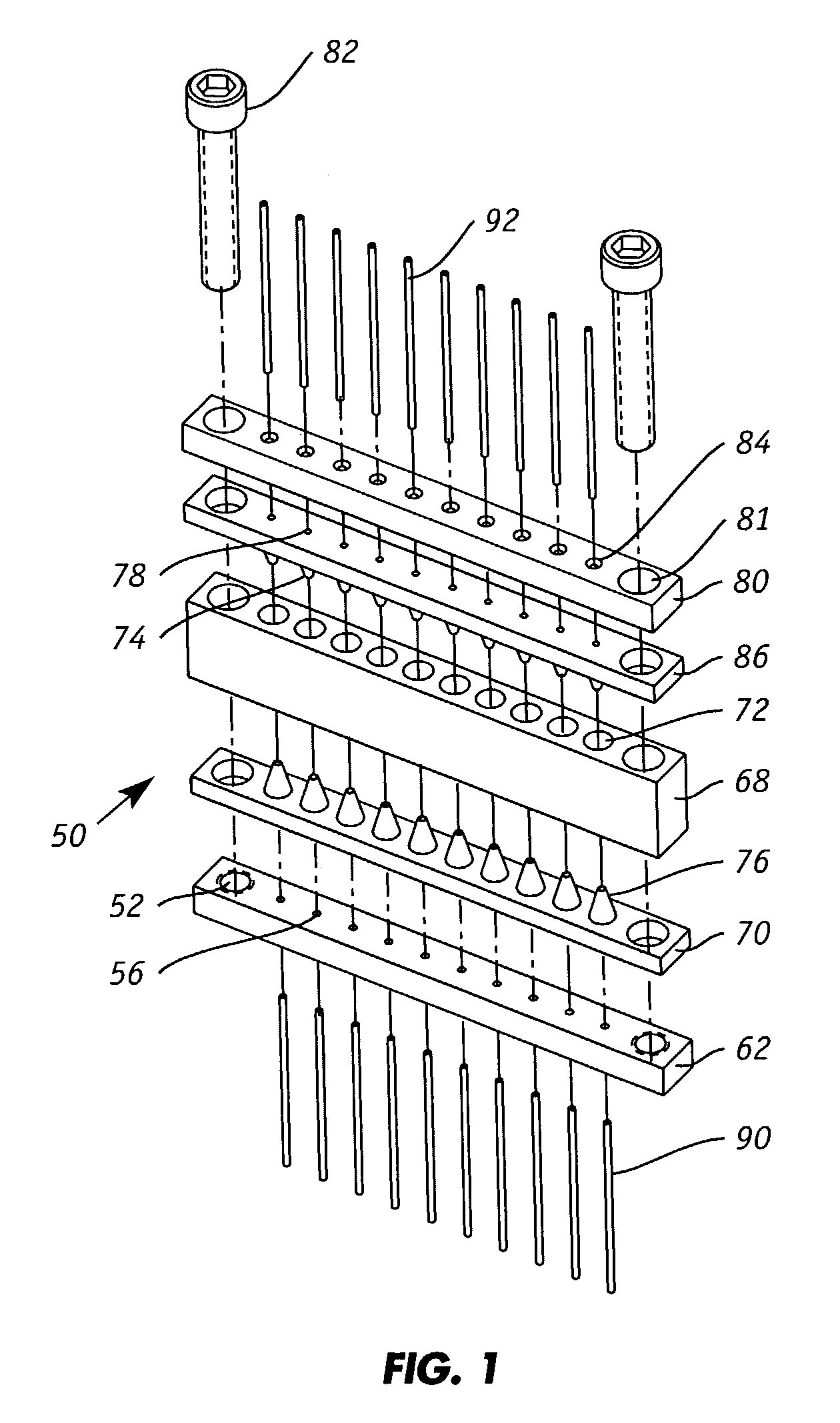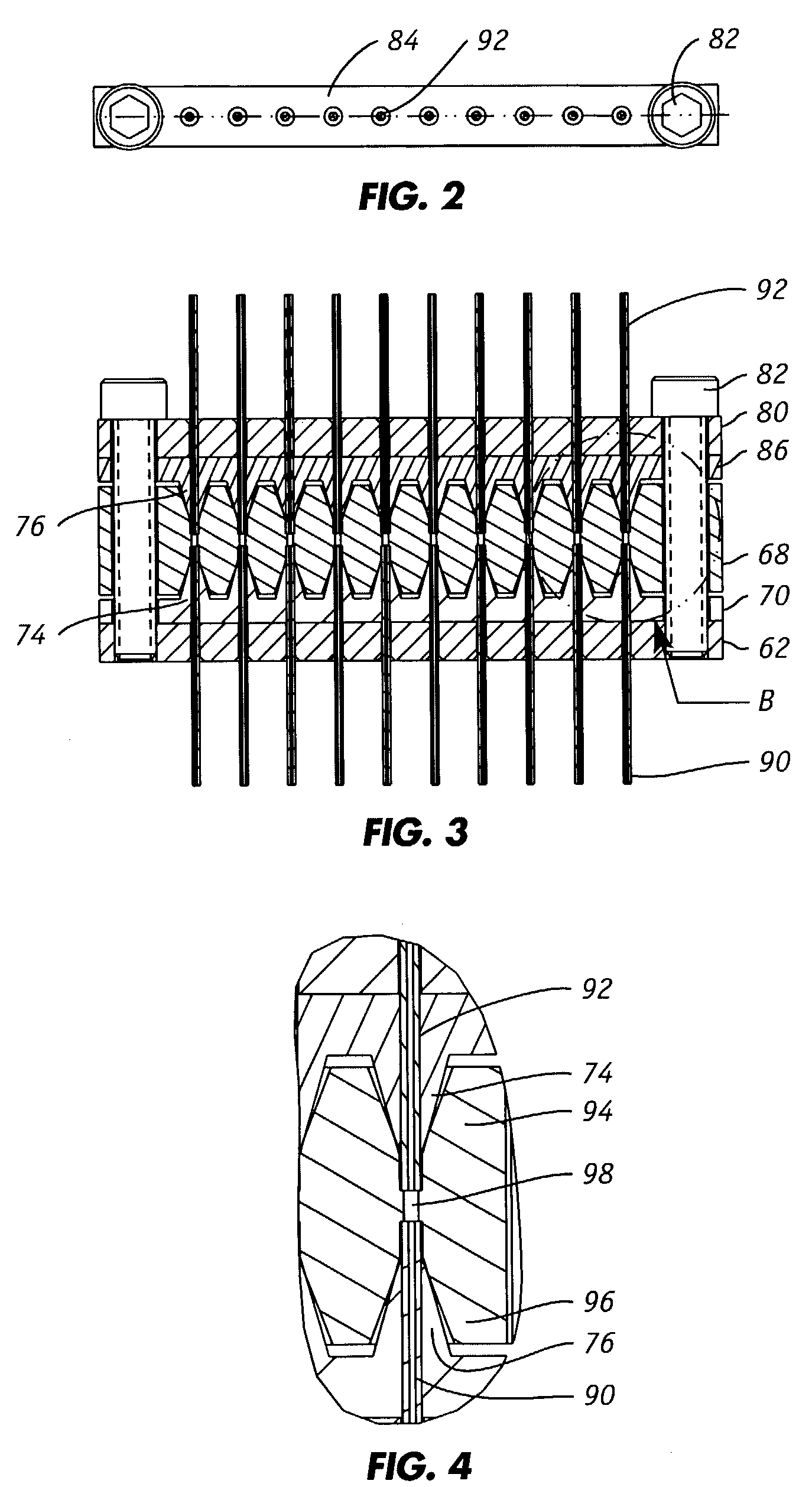Capillary interconnect device
a capillary interconnect and connector technology, applied in the field of microfluidic systems, can solve the problems of difficult to achieve, difficult to achieve, and unsuitable adhesive bonding for many chemical analysis applications
- Summary
- Abstract
- Description
- Claims
- Application Information
AI Technical Summary
Problems solved by technology
Method used
Image
Examples
Embodiment Construction
[0034]The invention is directed to techniques for connecting two sets of capillaries together and for connecting capillaries and / or other fluid conduits directly to inlet and / or outlet ports of a microscale device. For convenience, one set will be referred to as the “inlet” capillaries and the other set as the “outlet” capillaries. It is not intended that the structures and dimensions of the inlet and outlet capillaries be different. Preferred capillaries have circular inner diameters that range from 5 microns to 250 microns. Capillaries are available commercially from numerous sources including, for example, Polymicro Technologies LLC (Phoenix, Ariz.).
[0035]The inventive interconnecting device is particularly suited for connecting inlet capillaries to outlet capillaries that are in turn connected to a microfluidic substrate or device. The outlet capillaries, for example, may be connected to sources of chemicals, solvents and other fluids that are delivered to and used in the microf...
PUM
 Login to View More
Login to View More Abstract
Description
Claims
Application Information
 Login to View More
Login to View More - R&D
- Intellectual Property
- Life Sciences
- Materials
- Tech Scout
- Unparalleled Data Quality
- Higher Quality Content
- 60% Fewer Hallucinations
Browse by: Latest US Patents, China's latest patents, Technical Efficacy Thesaurus, Application Domain, Technology Topic, Popular Technical Reports.
© 2025 PatSnap. All rights reserved.Legal|Privacy policy|Modern Slavery Act Transparency Statement|Sitemap|About US| Contact US: help@patsnap.com



